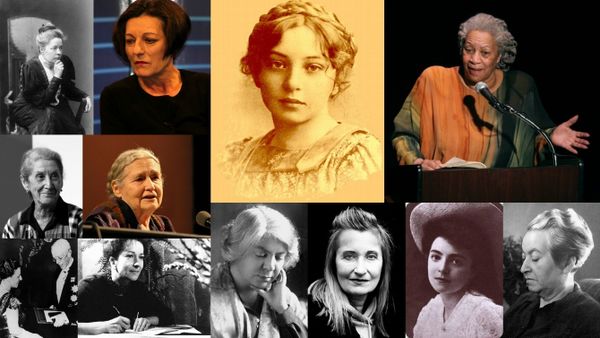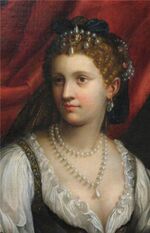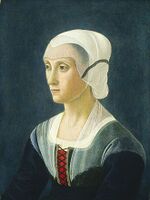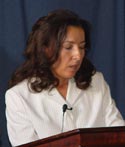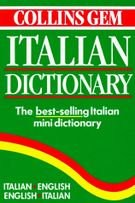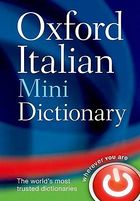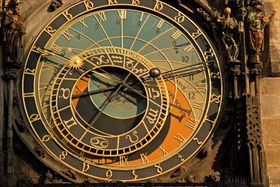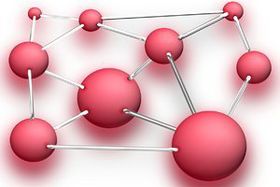Difference between revisions of "Category:Women Authorship--Italian"
| (32 intermediate revisions by the same user not shown) | |||
| Line 4: | Line 4: | ||
{| cellpadding="2" cellspacing="5" style="width:100%; vertical-align:top; background:transparent;" | {| cellpadding="2" cellspacing="5" style="width:100%; vertical-align:top; background:transparent;" | ||
{{WindowMain | {{WindowMain | ||
|title= [[Women Authorship]] | |title= [[Women Authorship]] ([[Italian language]]) | ||
|backgroundLogo= Bluebg_rounded_croped.png | |backgroundLogo= Bluebg_rounded_croped.png | ||
|logo= history.png | |logo= history.png | ||
| Line 27: | Line 27: | ||
|px= 38 | |px= 38 | ||
|content= | |content= | ||
[[File:Lucrezia Tornabuoni.jpg|thumb|150px|[[Lucrezia Tornabuoni]]]] | [[File:Fede Galizia.jpg|thumb|150px|[[Fede Galizia]]]] | ||
[[File:Lucrezia Tornabuoni.jpg|thumb|left|150px|[[Lucrezia Tornabuoni]]]] | |||
[[File:Artemisia Gentileschi.jpg|thumb|left|150px|[[Artemisia Gentileschi]]]] | |||
[[File:Margherita Guarducci.jpg|thumb|150px|[[Margherita Guarducci]]]] | |||
[[File:Carla RIcci.jpg|thumb|150px|[[Carla Ricci]]]] | |||
Italian women were among the very first to contribute to Second Temple Studies as writers and artists. Already in 1475 [[Lucrezia Tornabuoni]] published a collection of poems dealing with major characters in the Bible, including Judith, Tobias, Esther, Susanna, and John the Baptist. [[Fede Galizia]] in the 16th century, and [[Artemisia Gentileschi]] in the 17th century broke the male monopoly in the arts and emerged as renowned painters, focusing on female biblical characters like Judith, Susanna, Elizabeth and Mary of Nazareth. | |||
At the turn of the 18th century, [[Angiola Teresa Muratori-Scannabecchi]] and [[Maria Margherita Grimani]] composed oratorios on Old and New Testament subjects. In 1733 [[Francesca Manzoni Giusti]], member of the Academies of the Trasformatis and the Arcadis, wrote a drama on [[Esther]]. | |||
A long period of silence followed these pioneering works. Italian women reentered the field only after World War II, this time as scholars. In the 1950s and 1960s archaeologist [[Margherita Guarducci]] led the excavations of the [[Tomb of Peter]] in the Vatican. In 1967 [[Clara Kraus Reggiani]] began her publishing work on the Hellenistic-Jewish tradition and Philo of Alexandria. In the 1980s [[Liliana Rosso-Ubigli]] from the University of Turin gave her contribution to the study of the OT Pseudepigrapha. | |||
In the 1980s and 1990s theologians [[Vilma Gozzini]] and [[Carla Ricci]] and novelist [[Rosa Artale]] first entered the field of New Testament Studies. In 1995 anthropologist [[Adriana Destro]] teamed [[Mauro Pesce]] in the first of a long series of publications on the sociology of the early Jesus movement. [[Francesca Calabi]] emerged as a leading authority in [[Hellenistic-Jewish Studies]]. | |||
In the 2010s [[Mara Rescio]] contributed to the field of [[Historical Jesus Studies]]. | |||
}} | }} | ||
| Line 68: | Line 83: | ||
}} | }} | ||
{{WindowMain | |||
|title= Cognate Fields ([[Italian language|Italian]]) | |||
|backgroundLogo= Bluebg_rounded_croped.png | |||
|logo= contents.png | |||
|px= 38 | |||
|content= [[File:Fields research.jpg|280px]] | |||
[[:Category:Second Temple Studies--Italian|Second Temple Studies]] -- [[:Category:Enochic Studies--Italian|Enochic Studies]] -- [[:Category:Apocalyptic Studies--Italian|Apocalyptic Studies]] -- [[:Category:Qumran Studies--Italian|Qumran Studies]] -- [[:Category:OT Apocrypha Studies--Italian|OT Apocrypha Studies]] -- [[:Category:Wisdom Studies--Italian|Wisdom Studies]] -- [[:Category:OT Pseudepigrapha Studies--Italian|OT Pseudepigrapha Studies]] -- [[:Category:Hellenistic-Jewish Studies--Italian|Hellenistic-Jewish Studies]] -- [[:Category:Philo Studies--Italian|Philo Studies]] -- [[:Category:Josephus Studies--Italian|Josephus Studies]] -- [[:Category:Historical Jesus Studies--Italian|Historical Jesus Studies]] -- [[:Category:Pauline Studies--Italian|Pauline Studies]] -- [[:Category:Johannine Studies--Italian|Johannine Studies]] -- [[:Category:Petrine Studies--Italian|Petrine Studies]] -- [[:Category:Gospels Studies--Italian|Gospels Studies]] -- [[:Category:Christian Origins Studies--Italian|Christian Origins Studies]] -- [[:Category:New Testament Studies--Italian|New Testament Studies]] -- [[:Category:Early Christian Studies--Italian|Early Christian Studies]] -- [[:Category:Early Jewish Studies--Italian|Early Jewish Studies]] -- [[:Category:Early Islamic Studies--Italian|Early Islamic Studies]] -- [[:Category:Early Samaritan Studies--Italian|Early Samaritan Studies]] -- [[:Category:Hebrew Bible Studies--Italian|Hebrew Bible Studies]] -//- [[:Category:Fiction--Italian|Fiction]] -//- [[:Category:Women Authorship--Italian|Women Authorship]] -- [[:Category:Jewish Authorship--Italian|Jewish Authorship]] | |||
}} | |||
|} | |} | ||
|} | |} | ||
Latest revision as of 12:44, 8 December 2019
|
Women Authorship (Italian) -- History of research -- Overview Italian women were among the very first to contribute to Second Temple Studies as writers and artists. Already in 1475 Lucrezia Tornabuoni published a collection of poems dealing with major characters in the Bible, including Judith, Tobias, Esther, Susanna, and John the Baptist. Fede Galizia in the 16th century, and Artemisia Gentileschi in the 17th century broke the male monopoly in the arts and emerged as renowned painters, focusing on female biblical characters like Judith, Susanna, Elizabeth and Mary of Nazareth. At the turn of the 18th century, Angiola Teresa Muratori-Scannabecchi and Maria Margherita Grimani composed oratorios on Old and New Testament subjects. In 1733 Francesca Manzoni Giusti, member of the Academies of the Trasformatis and the Arcadis, wrote a drama on Esther. A long period of silence followed these pioneering works. Italian women reentered the field only after World War II, this time as scholars. In the 1950s and 1960s archaeologist Margherita Guarducci led the excavations of the Tomb of Peter in the Vatican. In 1967 Clara Kraus Reggiani began her publishing work on the Hellenistic-Jewish tradition and Philo of Alexandria. In the 1980s Liliana Rosso-Ubigli from the University of Turin gave her contribution to the study of the OT Pseudepigrapha. In the 1980s and 1990s theologians Vilma Gozzini and Carla Ricci and novelist Rosa Artale first entered the field of New Testament Studies. In 1995 anthropologist Adriana Destro teamed Mauro Pesce in the first of a long series of publications on the sociology of the early Jesus movement. Francesca Calabi emerged as a leading authority in Hellenistic-Jewish Studies. In the 2010s Mara Rescio contributed to the field of Historical Jesus Studies.
Women Authorship (Italian) -- Highlights
|
|
Pages in category "Women Authorship--Italian"
The following 60 pages are in this category, out of 60 total.
1
- == == 1450s == == ==
- Storie sacre (Sacred Narratives / 1475c Tornabuoni), poetry
- == == 1500s == == ==
- Judith with the Head of Holofernes (1596 Galizia), art
- == == 1600s == == ==
- Judith with the Head of Holofernes (1600 Fontana), art
- I meriti delle donne (1600 Fonte), book
- La nobilta, et l'eccellenza delle donne, co' diffetti, et mancamenti de gli huomini (The nobility and excellence of women, and the defects and vices of men / 1600 Marinella), book
- Judith Beheading Holofernes (1615-20 Gentileschi), art
- Judith and Her Maidservant with the Head of Holofernes (1625 Gentileschi), art
- Esther before Ahasuerus (1628 Gentileschi), art
- Birth and Naming of John the Baptist (1635 Gentileschi), art
- L'Esterre (Esther / 1695 Muratori-Scannabecchi / Bergamori), oratorio
- == == 1700s == == ==
- La decollazione di San Giovanni Battista (1715 Grimani), oratorio
- L'Ester (1733 Manzoni Giusti), play
- Daniello (Daniel / 1772 Coccia / @1731 Zeno), oratorio
- == == 1950s == == ==
- Il poema dell'uomo-Dio (1956-1959 Valtorta), vision
- La tomba di Pietro (The Tomb of St. Peter / 1959 Guarducci), book
- == == 1960s == == ==
- Filone Alessandrino e un'ora tragica della storia ebraica (1967 Kraus Reggiani), book
- Pietro ritrovato: il martirio, la tomba, le reliquie (Peter Found: The Martyrdom, the Tomb, the Relics / 1969 Guarducci), book
- == == 1970s == == ==
- La tradizione della guerra di Spartaco da Sallustio a Orosio (The Tradition of the War of Spartacus from Sallustius to Orosius / 1976 Stampacchia), book
- Vangelo secondo Maria (1979 Alberti), novel
- La lettera di Aristea a Filocrate (1979 Kraus Reggiani), book
- == == 1980s == == ==
- Introduzione agli apocrifi dell'Antico Testamento = Einleitung in die alttestamentlichen Apokryphen und Pseudepigraphen (Judaism outside the Hebrew Canon / 1980 Rost / Rosso Ubigli), book (Italian ed.)
- Filone di Alessandria: L'uomo e Dio (1986 Kraus Reggiani), book)
- Filone di Alessandria: La filosofia mosaica (1987 Radice/Kraus Reggiani), book
- Dispetti divini (1989 Alberti), novel
- == == 1990s == == ==
- Maria di Magdala e le molte altre (Mary Magdalene and Many Others / 1991 Ricci), book
- 4 Maccabei (1992 Kraus Reggiani), book
- La sentenza (1993 Artale), novel
- Lettera di Aristea a Filocrate (1995 Calabi), book
- Antropologia delle origini cristiane (1995 Destro, Pesce), book
- La Bibbia delle donne: un commentario = The Women's Bible Commentary (1996-99 @1992 Newsom, Ringe / Franzosi), edited volume (Italian ed.)
- Gesù e la comunità di Qumran = Jesus and the Dead Sea Scrolls (1997 @1992 Charlesworth / Franzosi), edited volume (Italian ed.)
- Tobia e l'angelo (1998 Tamaro), novel
2
- == == 2000s == == ==
- Come nasce una religione (2000 Destro/Pesce), book
- Immagini e rappresentazione: contributi su Filone di Alessandria (2002 Calabi), book
- Perdersi nella passione (2003 Artale), novel
- Giobbe = Job (2003 @1985 Janzen / Franzosi), book (Italian ed.)
- Forme culturali del cristianesimo nascente (2005 Destro, Pesce), book
- Masada (2007 Siliato), novel
- Daniele = Daniel (2007 @1984 Towner / Franzosi), book (Italian ed.)
- Forme culturali del cristianesimo nascente, 2nd ed. (2008 Destro, Pesce), book
- L’uomo Gesù (Encounters with Jesus / 2008 Destro, Pesce), book
- Storia della letteratura giudaico-ellenistica (2008 Kraus Reggiani), book
- == == 2010s == == ==
- La trasmissione delle parole di Gesù nei primi tre secoli (2011 Pesce, Rescio), edited volume
- La famiglia alternativa di Gesù: discepolato e strategie di trasformazione sociale nel Vangelo di Marco (2012 Rescio), book
Media in category "Women Authorship--Italian"
The following 4 files are in this category, out of 4 total.
- 1949 Pavia.jpg 328 × 500; 24 KB
- 1979 Kraus Reggiani.jpg 363 × 499; 27 KB
- 1982 Fabris Gozzini.jpg 388 × 600; 83 KB
- 1993 Calabi.jpg 342 × 461; 37 KB
